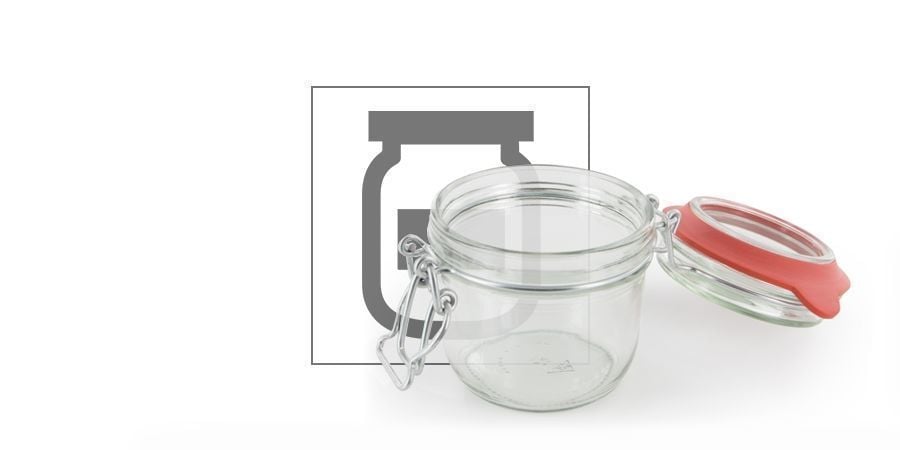
How To Prevent Mold When Storing Cannabis
Mouldy weed is no fun. Seeing hyphae grow on a stash that took an entire season to cultivate is heart-breaking to say the least. Use these tips to prevent such situations.
There are many lingering threats present when you cultivate cannabis, from larger animals such as birds and household pets down to smaller critters such as insects and bugs. However, some of these invasive lifeforms exist on the microscopic level and can go unnoticed by the naked eye until they have proliferated to a damaging extent. Such life forms include mold, a type of fungi that forms thread-like structures known as hyphae. Under optimal conditions, these threads grow from spores that land on food sources.
Mold can be a massive hassle for growers throughout the entire process of growing a crop, from the seedling stage all the way through to bloom and harvest. Because mold has a preference for damp and wet conditions, crops cultivated within humid and warm environments are more predisposed to mold infestation. However, the dreaded threat of mold does not cease when harvest has ended. Mold can still strike, perhaps even more heartbreakingly, when cannabis crop is in storage. Imagine seeing your plants through an entire grow season, only to pull out your stash jar to find a large network of mold growing over all of your hard work.
It is paramount to take numerous steps to avoid such a devastating situation. If you spot mold on your nugs, it’s pretty much game over at that point. Mold spores are so minute that inhaling them can cause extreme trouble in regards to health, especially in the lungs department.
HOW TO IDENTIFY MOLD
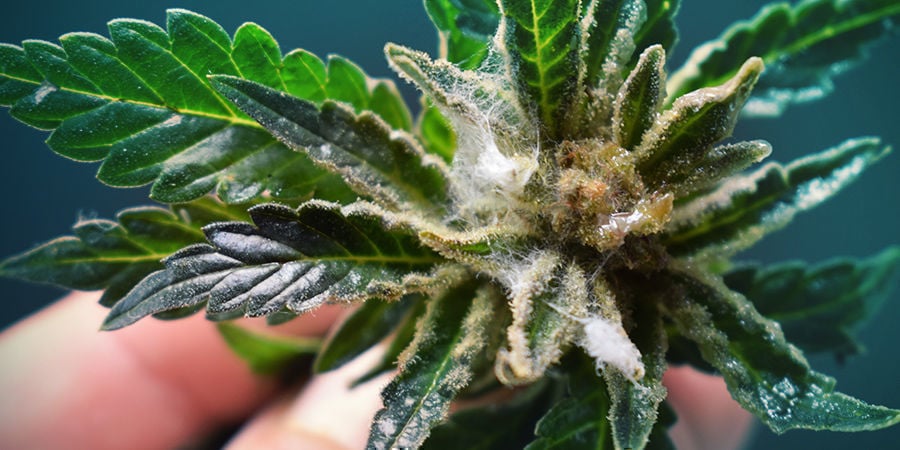
Before we delve into strategies regarding mold prevention during the storage of cannabis, it’s important to learn to identify the presence of mold. When you received a new stash of weed or plan on smoking some bud that you’ve been saving for some time, it’s best to check it for signs of mold prior to ingestion.
The presence of mold can be very subtle so the use of bright lights and even a magnifying lens is advised. What you’re looking for is any signs of spores, which will manifest as tiny black dots. If these spores have already started to proliferate and the hyphae has started to run and feed off of the bud, then you may detect a fuzzy substance that can grey, yellow or brown in colour.
Sight isn’t the only way to detect mold, the sense of smell can also pick up on tell-tale signs. Whiffs of must, sweat, and even urine can signify the presence of mold.
If you detect any of these signs, then the best place for the infected bud is the garbage. Never risk your health by smoking obviously moldy weed for a short time high.
WHAT ARE THE CAUSES OF MOLD?
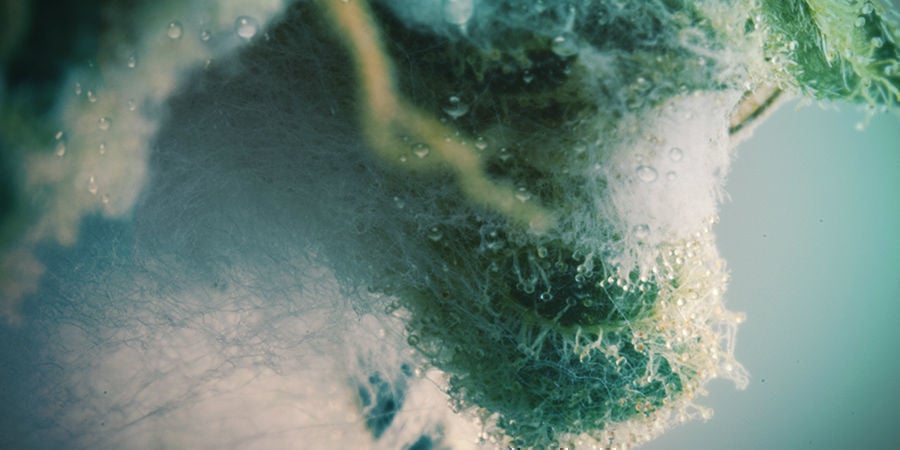
Mold is caused primarily by environmental conditions. Just like many plant species, fungi have environmental preferences in terms of nutrition, temperature, lighting, and air flow. It just so happens that mold prefers to go about decomposing organic matter within damp and dark settings with stagnant air. These factors need to be considered and avoided when planning both long- and short-term storage of weed.
As mold thrives in moist conditions, drying and curing weed correctly is so vital. If you rush the process and the inside of your bud is still wet and trapping moisture, you shouldn’t be surprised to see white hyphae spring forth from your precious flowers.
Mold also requires oxygen for its metabolic demands. Incorrectly stored bud will not only deteriorate in quality faster, it will also be more susceptible to mold infestation.
HOW TO AVOID MOLDY CANNABIS
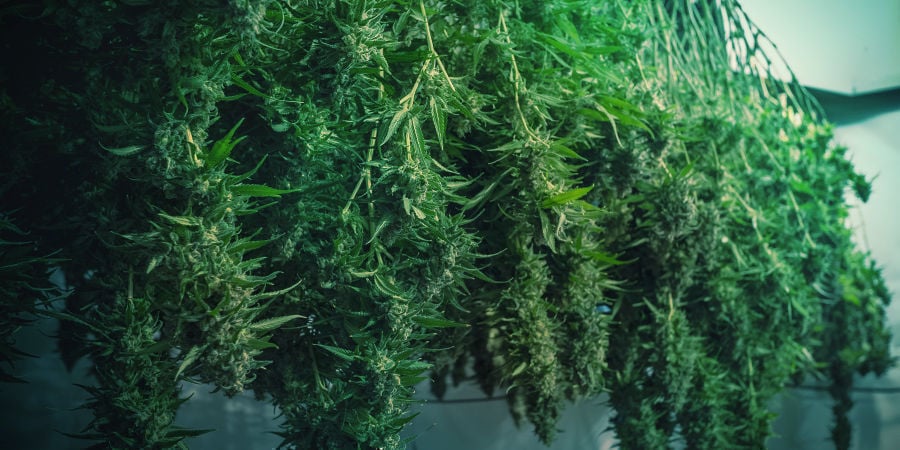
The key to avoiding moldy cannabis is to minimise the environmental factors that this life form requires to both survive and thrive. Fresh flowers should be thoroughly dried immediately after harvest as the initial first step of mold prevention. Flowers can be trimmed either wet or dry.
Wet trimming is when the trimming is carried out on wet and fresh buds as soon as they are cut from the main plant. These wet buds should then be spread evenly across a drying rack to ensure complete aeration. This is an important step, as stagnant air contributes to mold growth. Using fans is also advised during this process for the same reason. Heating devices can be employed, however they are reported to increase the risk of deterioration and decrease the quality of the harvest in terms of scent, by damaging the terpene profile.
Dry trimming involves severing entire branches of buds away from the main plant and hanging them up to dry using wash lines. Hang your bundles in the same anti-mold environment as discussed above.
Once your buds are entirely dried, they need to be trimmed, and then cured to completely eliminate the mold risk. Additionally, curing will greatly enhance the flavour and smoothness of the smoke.
To do so, place your dried buds into air tight jars and store in a cool and dark place. To begin with, you should check on them once a day to monitor for signs of mold growth. Any buds with these signs should be discarded immediately. Opening the lid also allows for air exchange to occur, where old air is removed from the jar and new fresh air enters. After a few weeks of this process your buds should be cracker dry, free of mold, and ready to blaze up.
SMOKING MOULDY WEED
Of course, no one wants to smoke mouldy weed. However, if there's nothing else in your stash, what else are you supposed to do? Well, if you want to avoid it, there are several ways of determining whether your nugs are mouldy or not. If you're ready to smoke, though, there are a few things you should keep in mind.
IS SMOKING MOULDY WEED BAD?
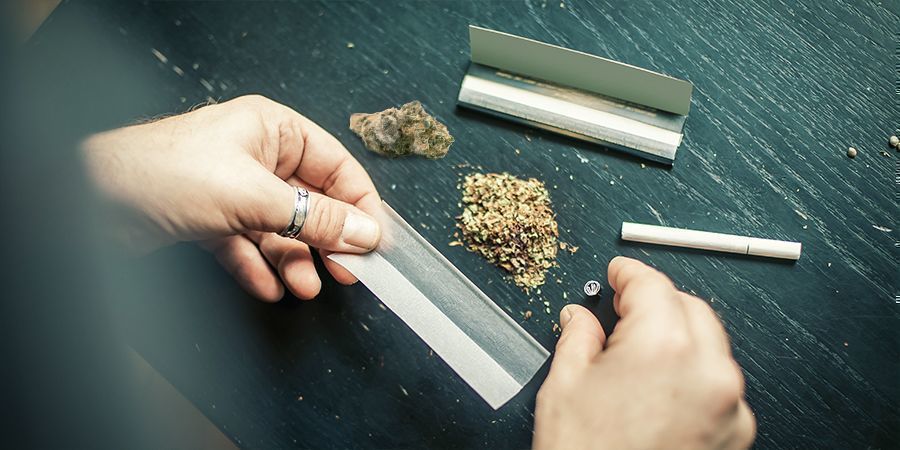
So, before we dive into the drawbacks of smoking mouldy weed, we want to help you identify if your weed is mouldy. Earlier, we discussed how you can identify mouldy weed on sight, provided you have a magnifying lens. However, even if you've already rolled up the weed, there are still ways you can tell if things are off. Before you even light it up, you can try to take a whiff of the joint, looking for a sweaty, musty, or urine-like smell. If you still can't tell, though, try taking a couple puffs. If you couldn't smell it then, you'd definitely be able to smell it now. The taste would match the scent, too, which would be even harder to ignore.
The risks that come with smoking mouldy weed don't have much to do with the actual act of smoking. In fact, these risks are more connected to the act of inhaling mould. Inhaling tiny quantities isn't harmful; we do it pretty regularly whether we're smoking or not. In certain cases, though, spores you inhale can sit in the lungs and become mould balls that you'll need surgery to remove.
CAN MOULDY WEED BE SAVED?
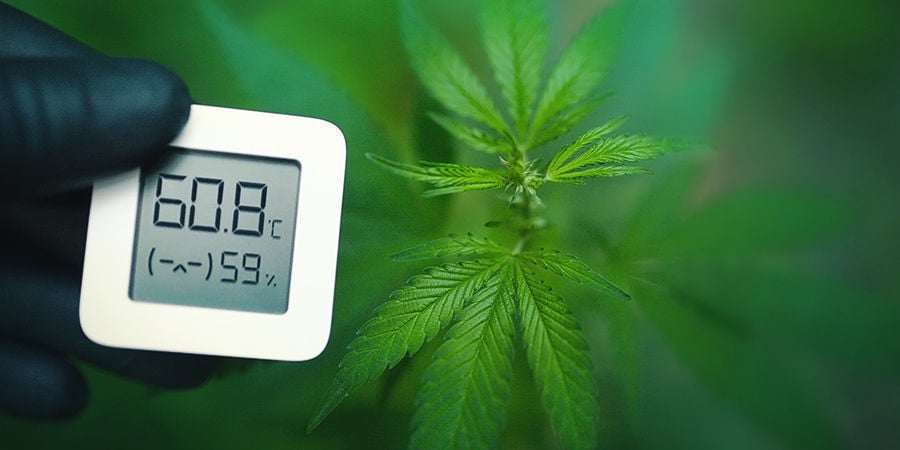
Throw away the mouldy bud if you can. If that really isn't an option, though, you've got an interesting way you can go about smoking it. The first, and probably the safest, is baking the cannabis at 95ºC for 15 minutes. It sounds weird, we know, but it works for a couple of reasons. First, mould has a hard time surviving once the temperature gets above 60ºC, with most kinds dying off after that point. Second, this temperature is a good bit below the point where weed would be decarboxylated. For those too lazy to Google that term, that simply means you can still smoke it and get high after it bakes.
Other than that, though, mouldy weed is usually not worth saving. Spare yourself the sweat-scented and must-flavoured experience. Just throw it out.
-
 3 min
30 March 2021
How to Clean Cannabis Trimming Scissors
Sticky scissors making the bud trimming process a pain? Worry no more. In this nifty guide, we'll show you how to clean and maintain your blades so you can carry out this essential step of your...
3 min
30 March 2021
How to Clean Cannabis Trimming Scissors
Sticky scissors making the bud trimming process a pain? Worry no more. In this nifty guide, we'll show you how to clean and maintain your blades so you can carry out this essential step of your...
-
 3 min
14 October 2019
The Best Secret Spots To Hide Your Cannabis Stash
Stashing your weed can be tricky, especially if you live with people who are not cannabis-friendly. So here are a few ideas to get you going.
3 min
14 October 2019
The Best Secret Spots To Hide Your Cannabis Stash
Stashing your weed can be tricky, especially if you live with people who are not cannabis-friendly. So here are a few ideas to get you going.





 United States
United States

